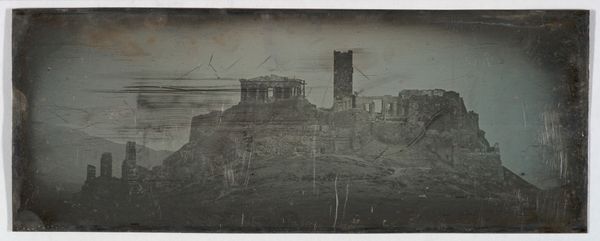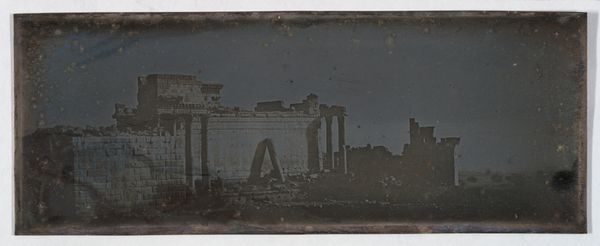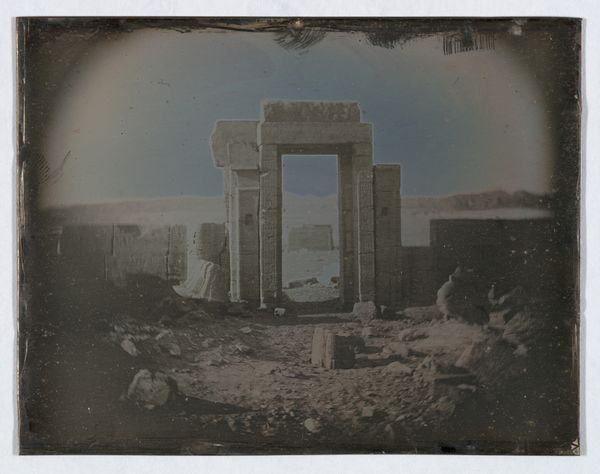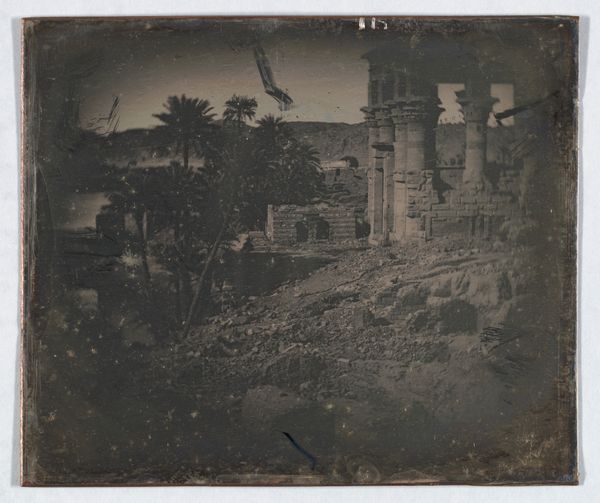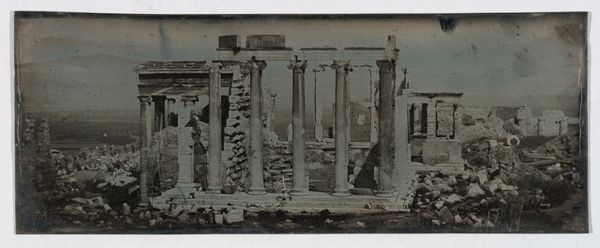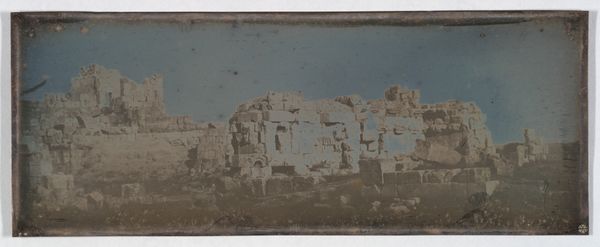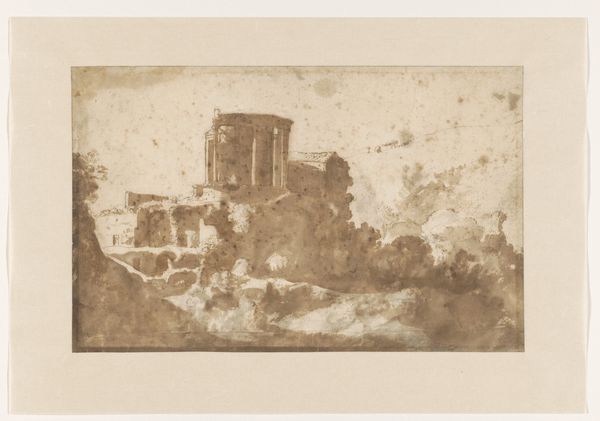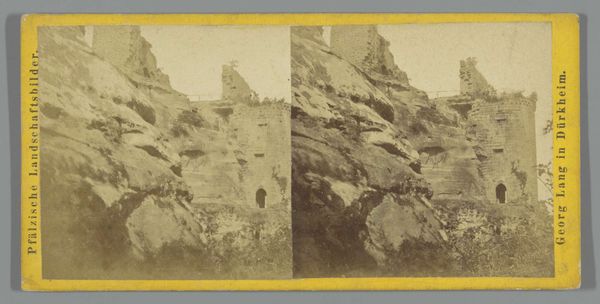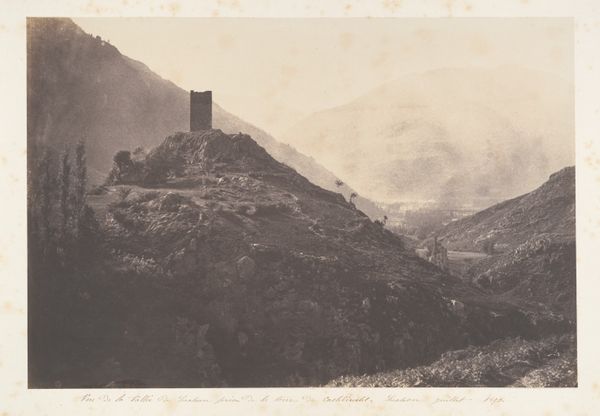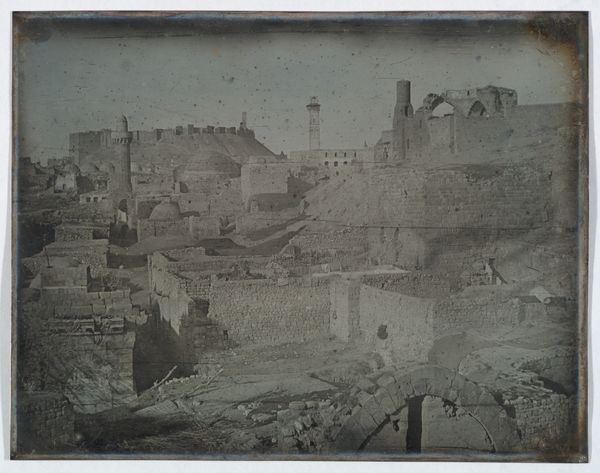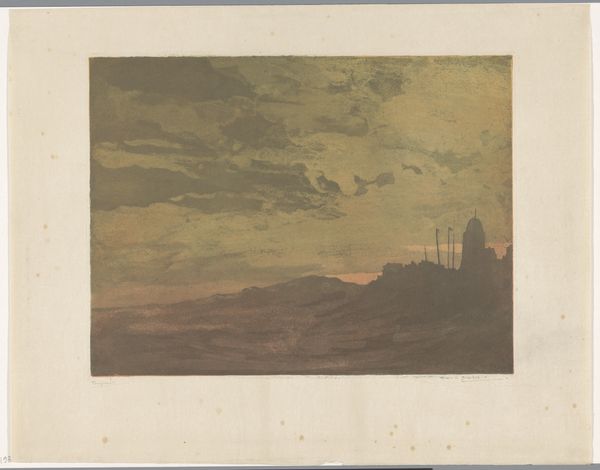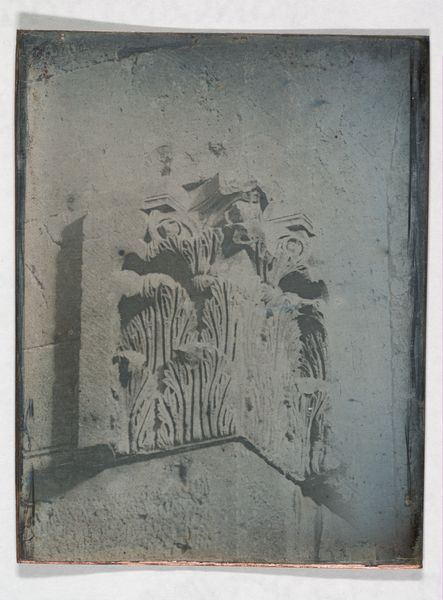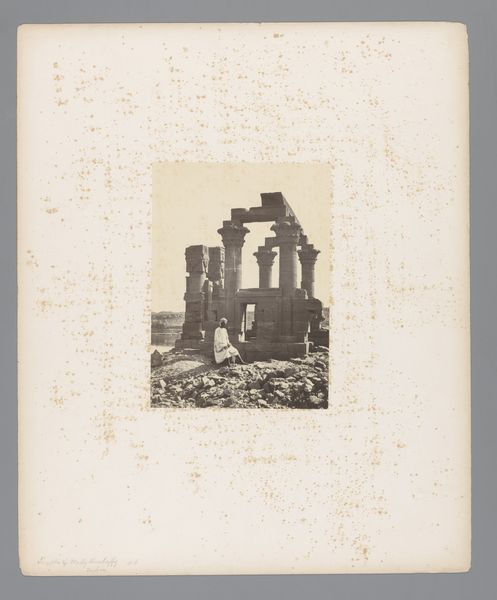
Temple of Artemis, Sardis (134. Sardes. 1843. T. de Cybèle.) 1843
0:00
0:00
daguerreotype, photography
#
landscape
#
daguerreotype
#
photography
#
ancient-mediterranean
#
column
#
romanticism
Dimensions: Image: 7 3/8 × 9 1/2 in. (18.8 × 24.1 cm)
Copyright: Public Domain
Curator: This daguerreotype, titled "Temple of Artemis, Sardis" comes to us from Joseph-Philibert Girault de Prangey, created in 1843. Editor: What strikes me immediately is its somber mood. The image almost feels like a ruin in itself, mirroring its subject, shrouded in blues and grays. Curator: Yes, that muted palette is partly a result of the daguerreotype process. However, consider the historical context. Photography itself was emerging as a tool for documenting and possessing faraway places. Girault de Prangey was particularly interested in places of the ancient world and of religious importance. This particular temple in modern day Turkey, which housed a cult statue of the mother goddess Cybele, and later Artemis, certainly fits this characterization. Editor: So the choice isn't just about capturing the visual, but also the cultural weight? These columns are so iconic, emblems of Western civilization itself. I find it hard not to see these ancient ruins through a contemporary lens. Whose stories get told in history, and who is relegated to rubble? These images almost function like a reminder of both what is revealed and obscured in visual history. Curator: Precisely. The fluted columns, although partially ruined, connect us directly to complex ancient ritual practices, but equally tell a story about shifting power structures and changing narratives through centuries of religious and political change. Artemis embodies concepts of autonomy and nature; that those notions would arise in this now ruined man-made setting provides rich material for dialogue between architecture and nature. The contrast also opens questions about what constitutes our relationship with sacred spaces. Editor: It's a powerful intersection of history and image-making, showing the resilience of cultural memory encoded in visual symbols, prompting viewers to remember, to question, and reimagine their relationship with our ancient heritage. I keep returning to the surface, there is something beautiful about this photographic document also existing as an artifact. Curator: Exactly. The materiality adds another layer to its story of ruin and revival, highlighting that the image can be so much more than just a frozen moment in time. It invites continuous re-evaluation and reminds us of the ongoing nature of cultural identity and knowledge.
Comments
No comments
Be the first to comment and join the conversation on the ultimate creative platform.
